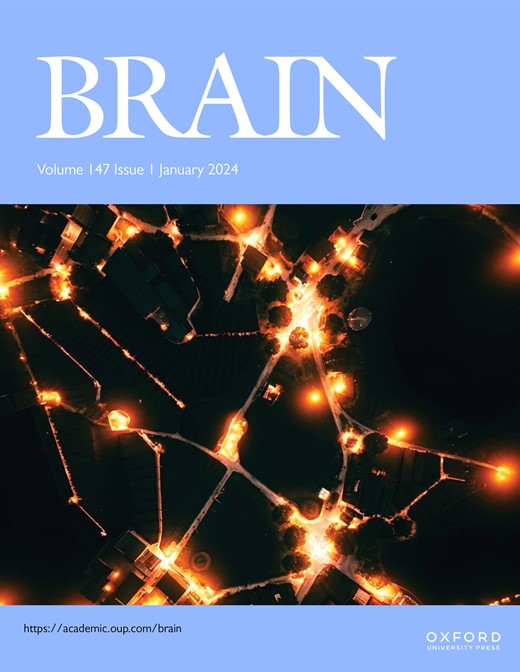Neurological complications of orthopoxvirus infections: neurotropism and neurovirulence
IF 10.6
1区 医学
Q1 CLINICAL NEUROLOGY
引用次数: 0
Abstract
With the declaration of monkeypox virus (MPXV) infection as a global health emergency in 2022 by the WHO and its ongoing presence, Orthopoxviruses have garnered increasing attention, including their capacity to cause neurological disease. Indeed, the mpox syndrome caused by MPXV infection is recapitulated in humans for several other Orthopoxviruses including variola (VARV, the cause of smallpox), Vaccinia (VACV), camelpox (CMPX), and cowpox (CPXV) viruses, albeit with variable disease severities. In addition to prototypic signs and symptoms of orthopoxvirus infections, such as fever, swollen lymph nodes, malaise, and skin lesions, MPXV-infected individuals also develop neurological syndromes such as headaches, myalgias, seizures, altered consciousness, and encephalopathy/encephalitis. Magnetic resonance imaging (MRI) of the brains of MPXV-infected persons can display hyperintensities consistent with brain edema. Pleocytosis has also been reported in the cerebrospinal fluid (CSF) from persons with MPXV infections, implying active infection of the central nervous system (CNS). Of note, newborn rodents, or animals with severe combined immune deficiency, were found to be susceptible to MPXV infection with evidence that the virus can cross the blood-brain barrier (BBB). In the present review we highlight the current understanding of Orthopoxvirus neuropathogenesis together with germane diagnostic and therapeutic considerations.正痘病毒感染的神经系统并发症:嗜神经性和神经毒性
随着世卫组织于2022年宣布猴痘病毒(MPXV)感染为全球突发卫生事件及其持续存在,正痘病毒引起了越来越多的关注,包括它们引起神经系统疾病的能力。事实上,由MPXV感染引起的mpox综合征在人类中也可以重现于其他几种正痘病毒,包括天花(VARV,天花的病因)、牛痘(VACV)、骆驼痘(CMPX)和牛痘(CPXV)病毒,尽管它们的疾病严重程度各不相同。除了典型的正痘病毒感染体征和症状,如发热、淋巴结肿大、不适和皮肤损伤外,mpxv感染者还会出现神经系统综合征,如头痛、肌痛、癫痫发作、意识改变和脑病/脑炎。mpxv感染者的脑磁共振成像(MRI)可显示与脑水肿一致的高强度。在MPXV感染者的脑脊液(CSF)中也有多细胞增多的报道,这意味着中枢神经系统(CNS)的活动性感染。值得注意的是,新出生的啮齿动物或有严重综合免疫缺陷的动物易受MPXV感染,有证据表明该病毒可以穿过血脑屏障(BBB)。在目前的回顾中,我们强调目前对正痘病毒神经发病机制的理解以及相关的诊断和治疗考虑。
本文章由计算机程序翻译,如有差异,请以英文原文为准。
求助全文
约1分钟内获得全文
求助全文
来源期刊

Brain
医学-临床神经学
CiteScore
20.30
自引率
4.10%
发文量
458
审稿时长
3-6 weeks
期刊介绍:
Brain, a journal focused on clinical neurology and translational neuroscience, has been publishing landmark papers since 1878. The journal aims to expand its scope by including studies that shed light on disease mechanisms and conducting innovative clinical trials for brain disorders. With a wide range of topics covered, the Editorial Board represents the international readership and diverse coverage of the journal. Accepted articles are promptly posted online, typically within a few weeks of acceptance. As of 2022, Brain holds an impressive impact factor of 14.5, according to the Journal Citation Reports.
 求助内容:
求助内容: 应助结果提醒方式:
应助结果提醒方式:


